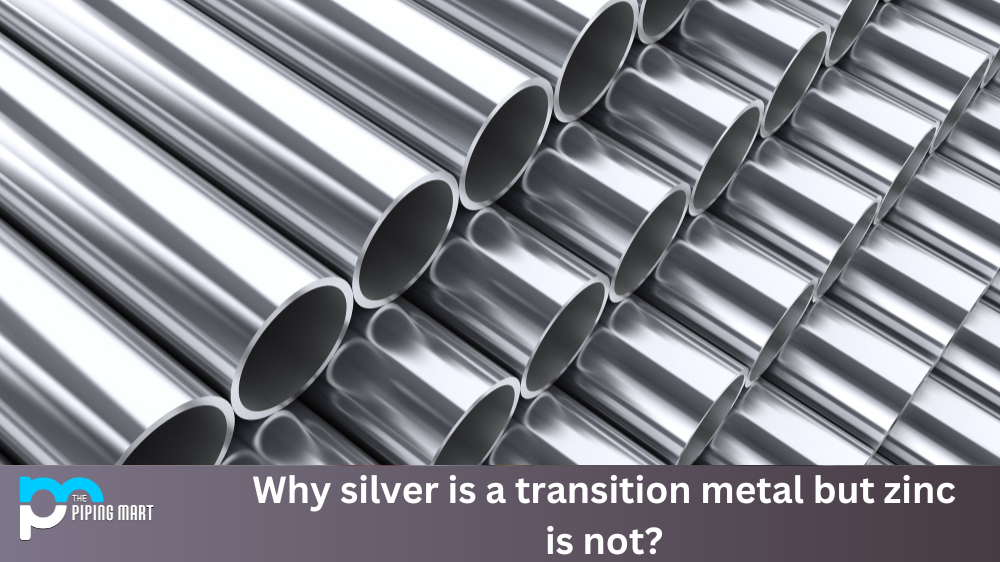In science, 118 elements make up the periodic table and can be categorized into three different groups. The three categories are metals, nonmetals, and transition metals. It’s important to know the differences between these three categories, so let’s take a closer look at why silver is a transition metal, but zinc is not.
Silver is considered a transition metal because it has the properties which define the transition elements, including its partially filled d-orbital which allows it to form multiple bonds and many different oxidation states. On the other hand, zinc is not considered a transition metal because it does not have a partially filled d-orbital. Zinc instead belongs in group 12 and does not exhibit some of the characteristics associated with transition metals like silver. This is because zinc’s outer orbital contains an s2 configuration and this means the element cannot expand its valence shell in order to further increase stability thus giving similar structural and bonding abilities found in transition metals.
Metals
Metals are an extremely common group of elements found in nature. They generally have a high melting point, high density, and good electrical and thermal conductivity. Examples of metals include iron, copper, gold, mercury, lead, and aluminum. Metals are often malleable or ductile—that is to say, they can be hammered or stretched into different shapes without breaking—and they also tend to be shiny when polished.
Nonmetals
Nonmetals are much less common than metals on the periodic table. Nonmetals have very low melting points compared to metals and conduct heat poorly. Examples of nonmetals include carbon dioxide (CO2), nitrogen (N2), oxygen (O2), sulfur (S8), chlorine (Cl2), fluorine (F2), and phosphorus (P4). Nonmetals often have dull colors and appear as solids at room temperature.
Transition Metals
Transition metals lie between the two other categories on the periodic table—hence their name “transition”—and represent about 30 of the 118 total elements. They share some characteristics with both metals and nonmetals; for example, transition metals can be shiny like many other types of metal but still have relatively low boiling points like nonmetals do. Some examples of transition metals are silver (Ag), gold (Au), cobalt (Co), nickel (Ni), copper (Cu), and zinc (Zn).
Conclusion:
Silver is a transition metal because it has properties that make it fall somewhere between a metal and a nonmetal; it has higher electrical conductivity than most nonmetals but lower than most other metals on the periodic table. Zinc, however, does not fall into this category because its properties more closely resemble those of traditional metals such as iron or copper rather than those of transition metals such as silver or gold. Knowing which elements fit into which categories on the periodic table will help you better understand how each element behaves in different situations!
Sakshee is a talented blogger, with a particular focus on the Business and Metal Industry. She is passionate about sharing her insights on various metal products and helping professionals to make a better decisions.




